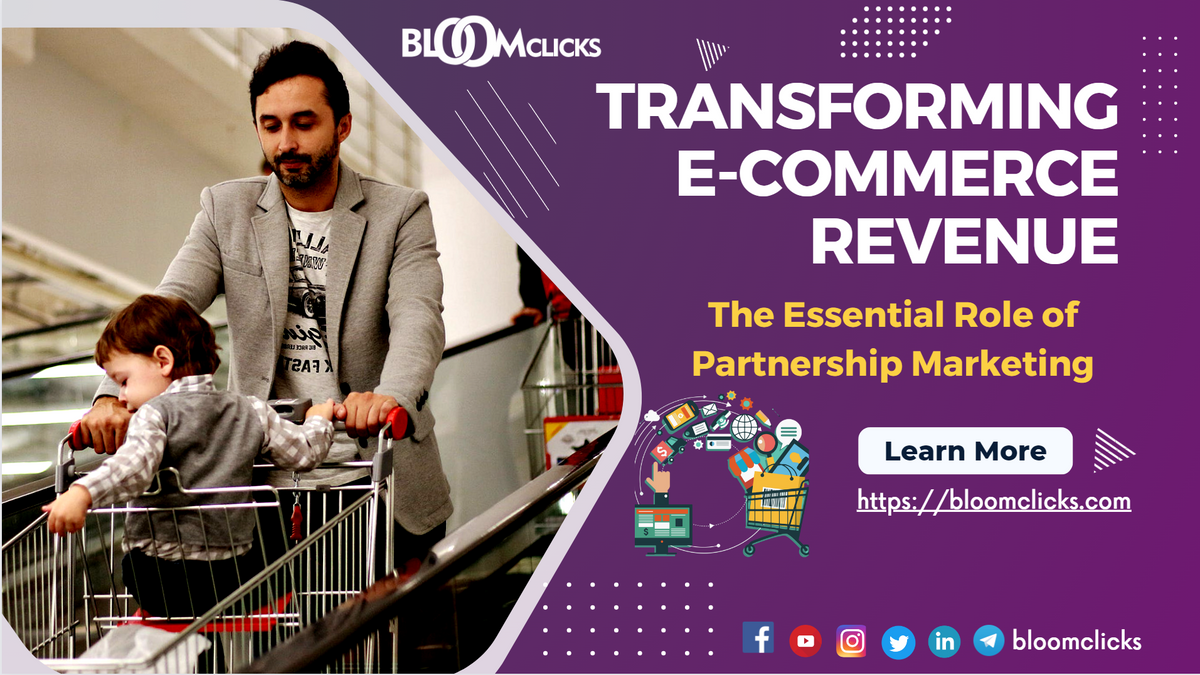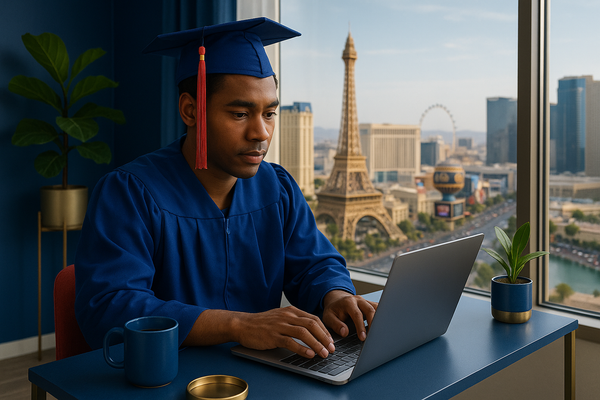Transforming E-commerce Revenue: The Essential Role of Partnership Marketing

As e-commerce continues to rise, finding innovative and cost-effective ways to drive sales becomes increasingly important. One of the most impactful yet underutilized strategies is partnership marketing, a collaborative effort between two or more entities to enhance mutual growth and success. If used correctly, partnership marketing can supercharge your e-commerce sales, improve brand awareness, and strengthen customer loyalty.
So, what is partnership marketing? It's a performance-based marketing strategy where you, as an e-commerce business, reward affiliates for each visitor or customer brought by the affiliate's marketing efforts. It's an effective way to leverage the reach and influence of related businesses, bloggers, influencers, or other digital entities to expand your customer base.

Now, let's delve into the finer details and learn how to supercharge your e-commerce sales through the power of partnership marketing.
Understanding Partnership Marketing in the E-commerce Context
The first step towards successful partnership marketing is understanding its workings. Essentially, it's a win-win business model that benefits both parties. Your affiliates earn commission through their marketing efforts, while you, as an e-commerce business owner, enjoy increased traffic, potential customer conversions, and a broadened customer base.
Numerous successful e-commerce companies employ partnership marketing strategies. For example, Amazon, one of the biggest e-commerce platforms globally, runs a successful affiliate program where affiliates can earn up to 10% in advertising fees.
For instance, a sportswear brand might partner with a health and fitness app, offering exclusive discounts to app users while promoting the app on its platform. In this case, both businesses are targeting health-conscious consumers, so the partnership is mutually beneficial and offers value to their shared audience.
Before setting up a partnership marketing campaign, it's crucial to conduct thorough market research, understand your customer demographics, and identify potential partners that share a similar audience. Remember, the right partnership can multiply your exposure and elevate your brand awareness.
Supercharge Your Partnership Program with Bloomclicks
When you're ready to elevate your partnership and affiliate marketing strategies, there's no superior partner to Bloomclicks Digital Advertising. Our team, brimming with partnership marketing experts, thrives on passion and delivers results beyond expectations.
Whether you're looking to build a partnership program from scratch or aiming to rejuvenate an existing one, Bloomclicks stands as your definitive solution. Equipped with extensive resources and a proven record of success, we're committed to powering your business with unmatched growth
1. Registration: The first step is to sign up for a merchant account on Bloomclicks. This involves providing some basic details about your business, your products or services, and your website.
2. Configuration: After registration, you'll need to set up your affiliate program. This includes deciding on the commission structure, setting up tracking for your links, creating promotional banners and materials, and outlining the terms and conditions for your affiliates.
3. Recruiting Affiliates: With your program set up, the next step is to attract affiliates to join your program. Bloomclicks features a marketplace where you can list your program for potential affiliates to discover. Additionally, you can reach out to affiliates directly or use other marketing strategies to attract them to your program.
4. Monitoring and Optimizing: Once your program is live and affiliates are promoting your products, it's essential to track the progress of your campaign. Bloomclicks offers robust analytics to monitor sales, clicks, conversions, and other key metrics. Use this data to understand what's working and what's not and to refine your campaign accordingly.
5. Paying Your Affiliates: Bloomclicks simplifies the process of paying your affiliates. It offers a variety of payment options, ensuring a smooth and hassle-free payment process.
Don't settle for average. Connect with Bloomclicks today and unlock the full potential of your partnership and affiliate marketing endeavours!
Strategies to Maximize E-commerce Sales through Partnership marketing
Creating a successful growth strategy for your e-commerce business through partnership marketing requires a keen understanding of both your business and potential partners. This collaborative approach not only expands your brand's reach but also facilitates new customer acquisitions and increased sales.
9 Effective strategies for building your e-commerce growth through partnership marketing:
1. Plan the campaign: Work together to create a marketing campaign that combines your strengths. This could involve cross-promotion on social media, exclusive discounts for customers, co-branded products, or shared events.
2. Identifying the Right Partners: The most important step in partnership marketing is finding the right businesses to partner with. Your ideal partner should be a business that complements your brand and shares a similar target audience. This alignment enhances the chance of success, as both companies can mutually benefit from each other's customer base.
3. Establishing Mutual Goals: It is crucial to align your business objectives with your partner. Clearly defined goals provide a roadmap for your partnership and ensure that both businesses work towards a common objective. These goals can range from increasing brand exposure and exploring new markets to boosting sales.
4. Creating a Co-Branding Strategy: Co-branding is a powerful strategy where two brands collaborate on a product or service offering. This could be a limited-edition product or an exclusive service available only through the partnership. Co-branded products allow you to tap into your partner's audience, thus expanding your market reach and potential for sales.
5. Implementing Cross-Promotion: Leverage each other's platforms for the promotion. This could be done via social media shout-outs, featuring each other's newsletters, blog posts, or offering exclusive discounts to each other's customers. This approach allows you to reach a wider audience, increasing brand visibility and potential customer conversions.
6. Building Strong Relationships with Affiliates: This is critical for the success of your program. Regular communication, timely payment, and providing necessary marketing resources can solidify your relationship with affiliates.
7. Emphasizing Seamless User Experience: Ensure that your customers have a seamless experience during their buyer's journey. This includes easy navigation between your e-commerce site and your partner's platform, a smooth checkout process, and consistent messaging across platforms.
Note: A user-friendly website and smooth shopping experience are vital to converting affiliate traffic into sales. Optimize your e-commerce site for mobile use, ensure fast loading times, and make the checkout process as simple as possible.
8. Offering Exclusive Deals and Promotions: Customers love discounts and special offers. Providing exclusive deals and promotions through your affiliates can motivate purchases and boost sales.
9. Using Data and Analytics: Regularly review and analyze your partnership marketing data. Understand which affiliates are driving more traffic and why, then use these insights to improve your program.
10. Regular Monitoring and Optimization: Monitor the performance of your partnership marketing strategy regularly. Use relevant key performance indicators (KPIs) such as customer acquisition cost, customer lifetime value, conversion rates, and overall return on investment. Make sure to analyze this data and optimize your strategy for continuous improvement.
11. Review and refine: After the campaign, review the results together. What worked well? What could be improved? Use this feedback to refine your strategy for future partnerships.
Challenges in E-commerce Partnership Marketing and How to Overcome Them
Despite the numerous benefits of partnership marketing in e-commerce, it isn't without its challenges. Successfully navigating these challenges requires a thoughtful approach and a willingness to adapt and learn. Let's delve into some of the common challenges and how you can overcome them:
1. Finding the Right Partner: Findinga business that aligns with your goals, values, and customer base can be challenging. It requires a deep understanding of your own business, thorough research, and careful analysis of potential partners.
Solution: Invest time in market research to identify potential partners that share your target audience and complement your business. Be patient and choose wisely, as the right partner can significantly impact the success of your marketing strategy.
2. Misalignment of Goals: This is a common challenge when partners don't share the same business objectives. If the goals are not aligned, the partnership may not be productive or beneficial to both parties.
Solution: Clear and open communication from the outset can help mitigate this challenge. Before entering into a partnership, have detailed discussions about what each party hopes to gain from the collaboration. Define shared goals and ensure all marketing activities align with these.
3. Customer Confusion: Customers might get confused if the partnership doesn't make sense or the messaging isn't clear. This confusion could lead to a decline in sales rather than an increase.
Solution: Make sure your partner aligns well with your brand and that your joint efforts make sense to the customer. Be clear in your communication about what the partnership entails and how it benefits the customer.
4. Balancing Efforts and Benefits:There may be a risk of unequal efforts and benefits in the partnership. One party might contribute more resources but reap fewer benefits, leading to dissatisfaction and possible conflicts.
Solution: Establish a clear agreement that outlines each party's roles, responsibilities, and expected benefits. Regularly review and assess the partnership to ensure it remains mutually beneficial.
5. Uneven Contribution: At times, one partner may contribute more than the other in terms of resources, effort, or time. This can lead to resentment and a breakdown of the partnership.
Solution: Set clear expectations about roles and responsibilities at the beginning of the partnership. Regularly check in with each other to ensure that the partnership remains balanced and mutually beneficial.
6. Brand Image Mismatch: If the partnering brands' images and values do not align, it can damage the reputation of both parties and lead to a loss of trust among customers.
Solution: Before initiating the partnership, thoroughly research your prospective partner. Their brand values, image, and reputation should complement yours. If your brand is about promoting sustainability, partnering with a brand known for its wasteful practices could harm your brand image.
7. Sharing Sensitive Data: In partnership marketing, sharing data such as customer information, sales figures, etc., often becomes necessary. This can pose a significant risk if the data is mishandled.
Solution: Create a legally binding agreement about how sensitive data will be handled, stored, and protected. Compliance with data protection laws is paramount in this situation.
8. Complex Tracking: With joint campaigns, tracking conversions and attributing success can become complicated, leading to disagreements between partners.
Solution: Use reliable tracking systems and agree on the method for attributing success at the outset. Make sure your partnership agreement includes how revenue and leads will be tracked and shared.
Despite these challenges, the benefits of partnership marketing for e-commerce make it worth the effort. With open communication, clear agreements, and a commitment to mutual growth, these obstacles can be overcome, leading to a successful and profitable partnership.
Measuring Success in Your Partnership Marketing Program
In the world of e-commerce, leveraging partnership marketing can significantly boost your sales. By partnering with Bloomclicks, you can tap into a network of skilled affiliates ready to promote your products or services. The journey may seem daunting initially, but with the right approach and constant optimization, your affiliate program can become a major revenue driver for your e-commerce business.
Defining key performance indicators (KPIs) is crucial in measuring the success of your program. KPIs can include the number of clicks, conversion rates, average order value, and customer lifetime value. Regularly track these KPIs and adapt your strategy based on your analysis.
In conclusion, partnership marketing presents a powerful way to supercharge your e-commerce sales. Its strategic implementation can lead to remarkable results, including improved brand visibility, increased traffic, and, ultimately, a significant boost in sales. Now is the time to start or refine your partnership marketing strategy and reap the rewards of this effective marketing channel.
Remember, the key to a successful partnership marketing campaign lies in understanding your affiliates, providing them with the support they need, and continuously monitoring and refining your strategies based on performance metrics. Take the first step today and supercharge your e-commerce sales with Bloomclicks.





